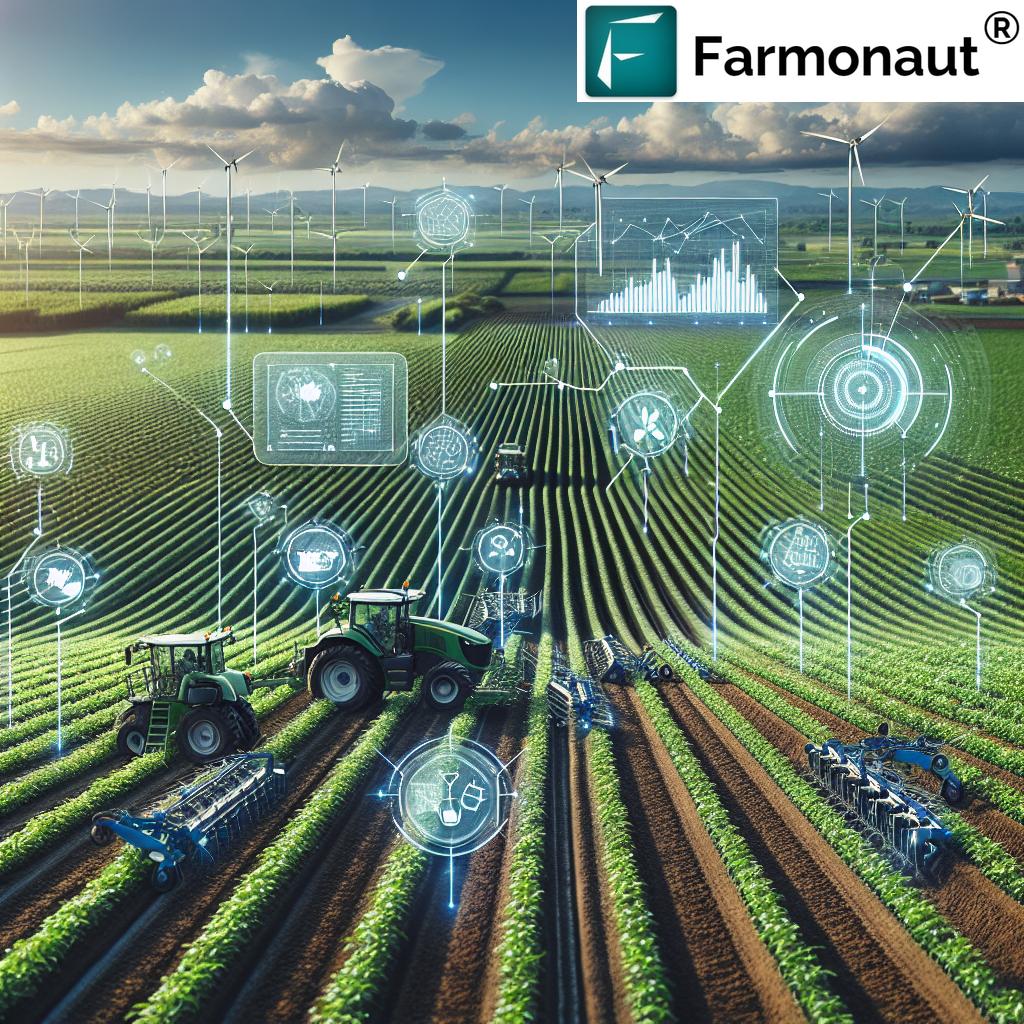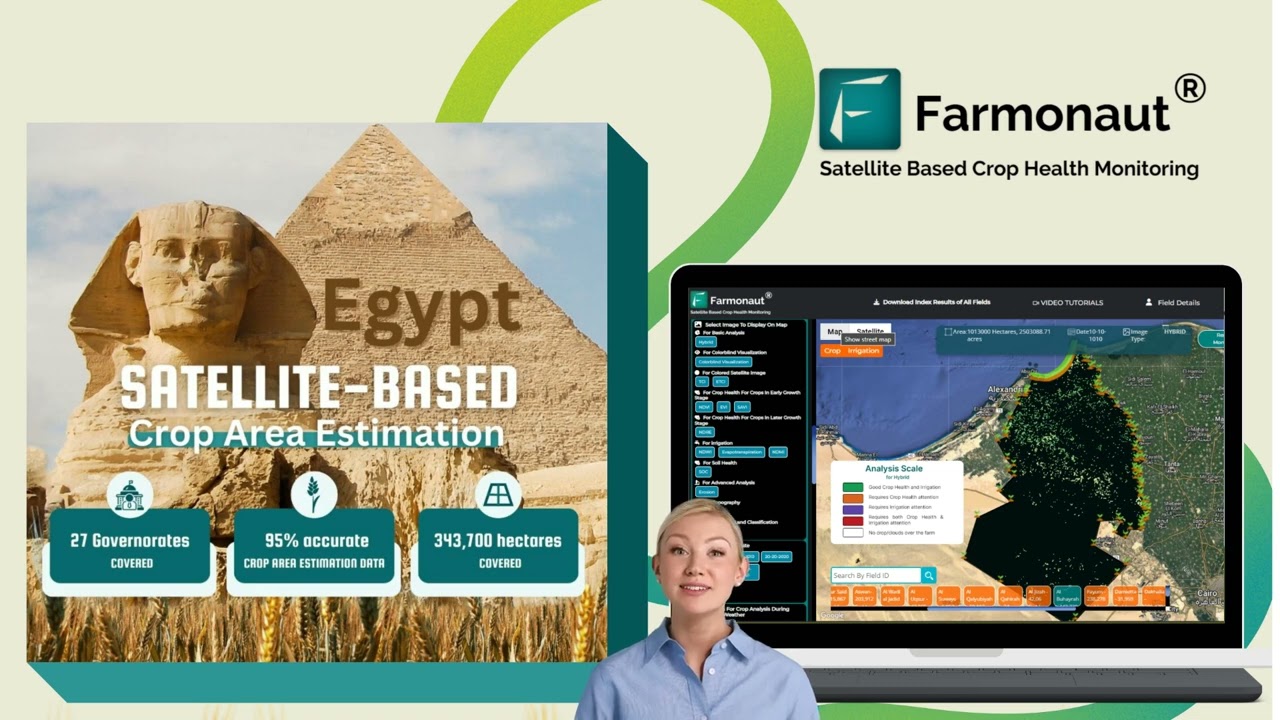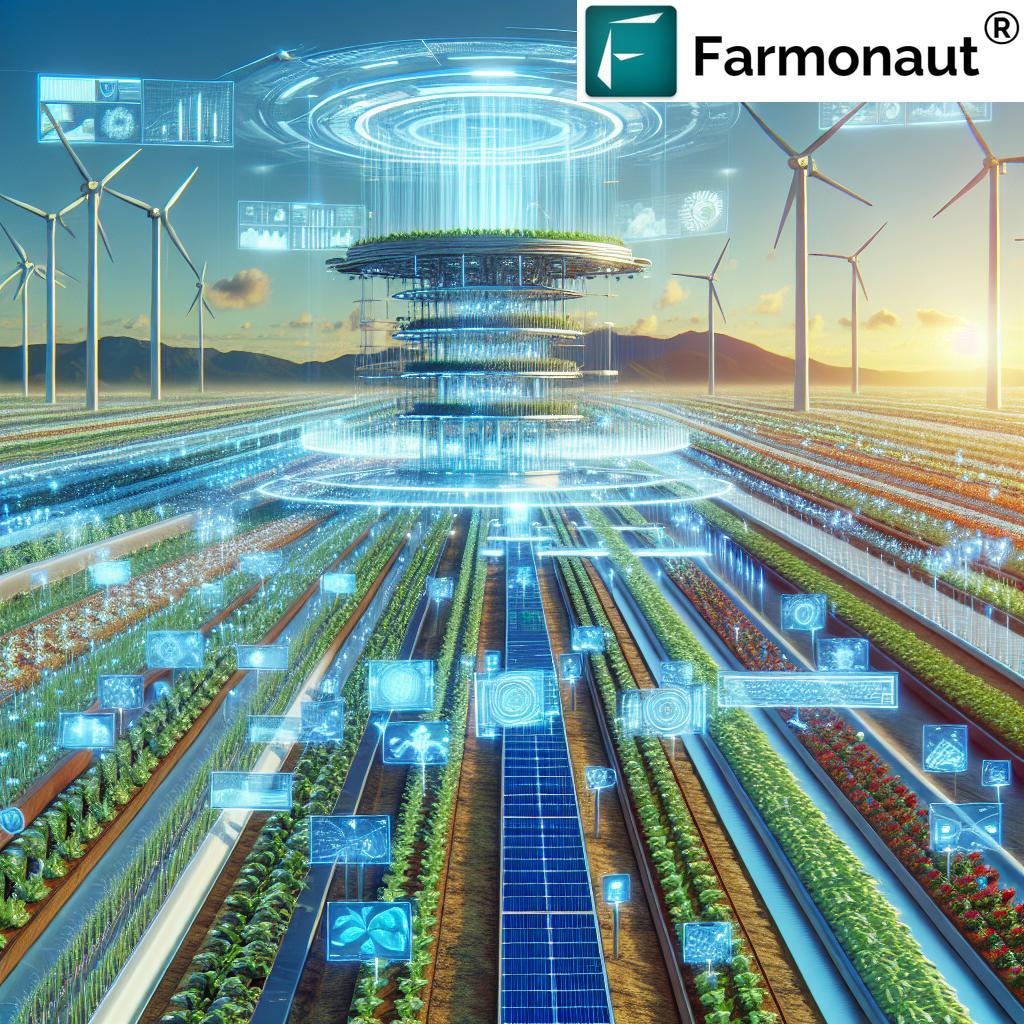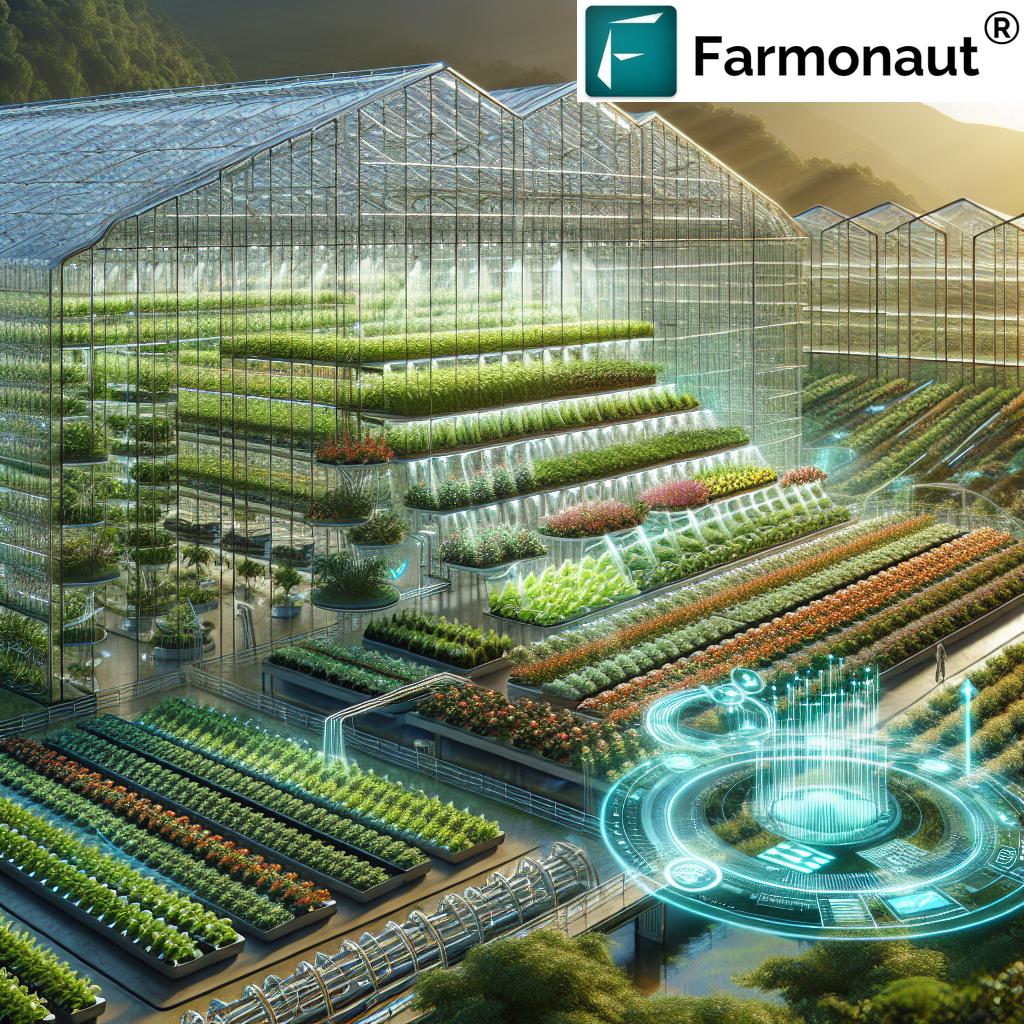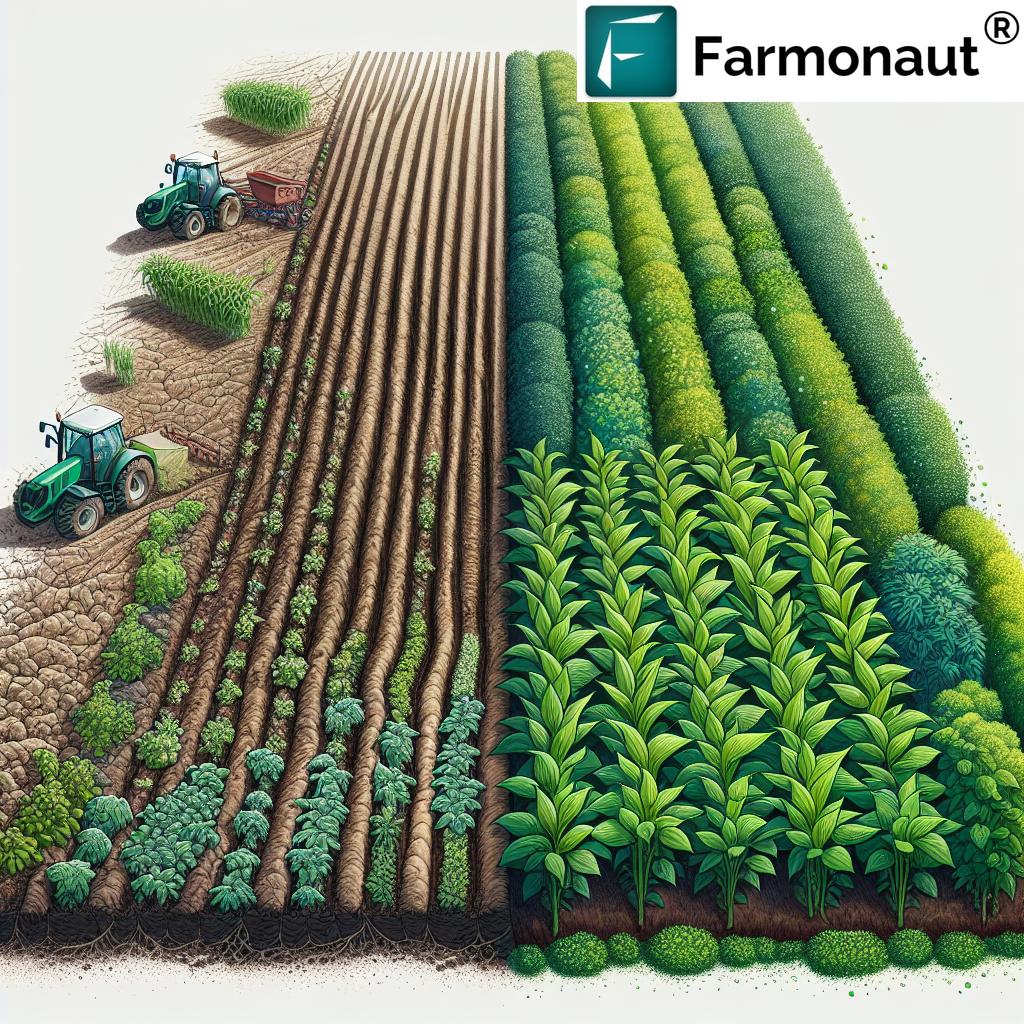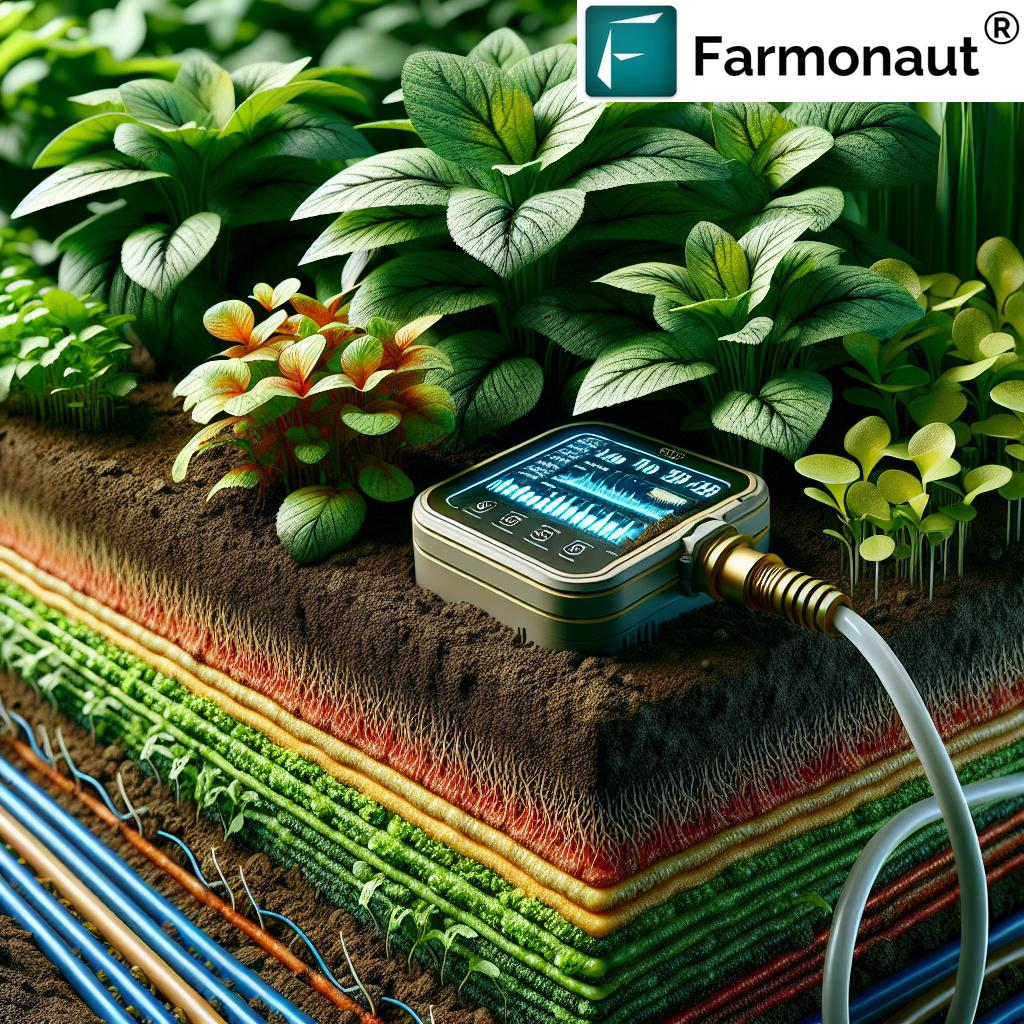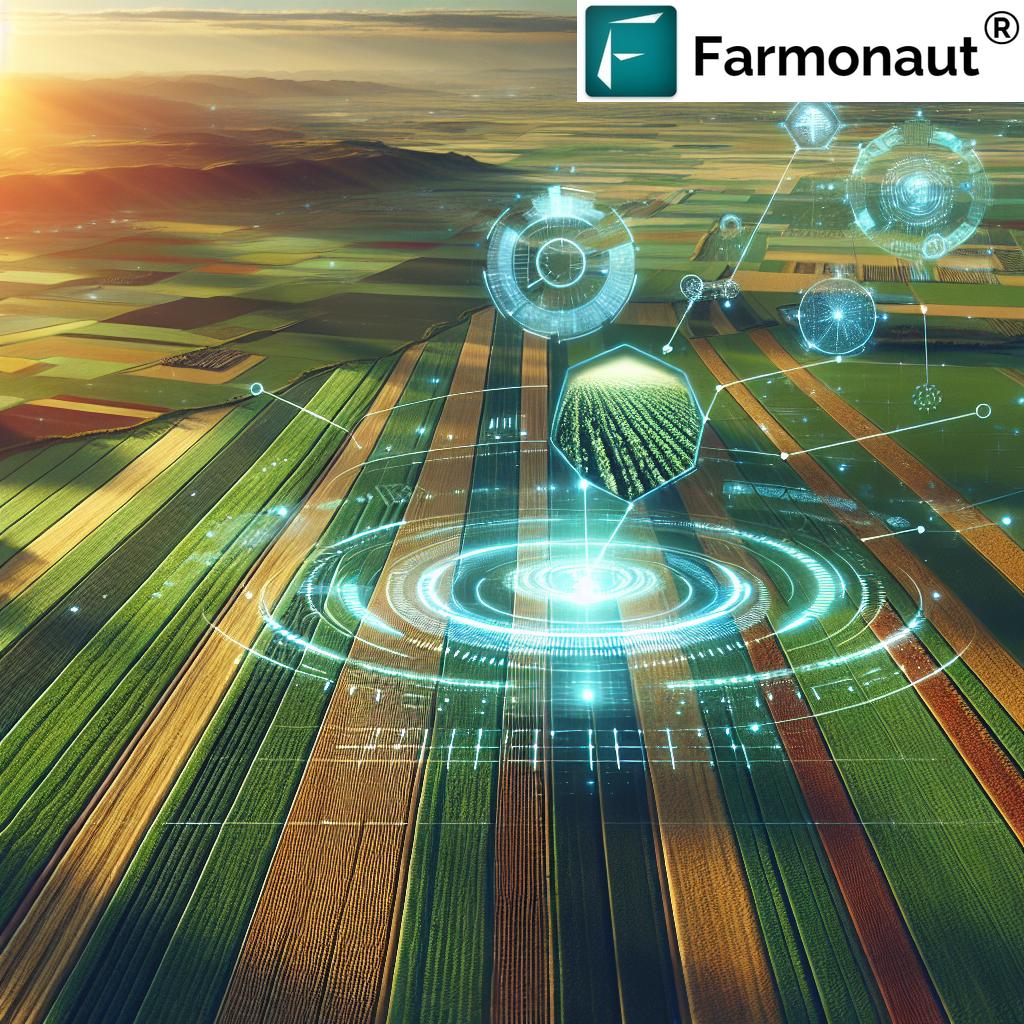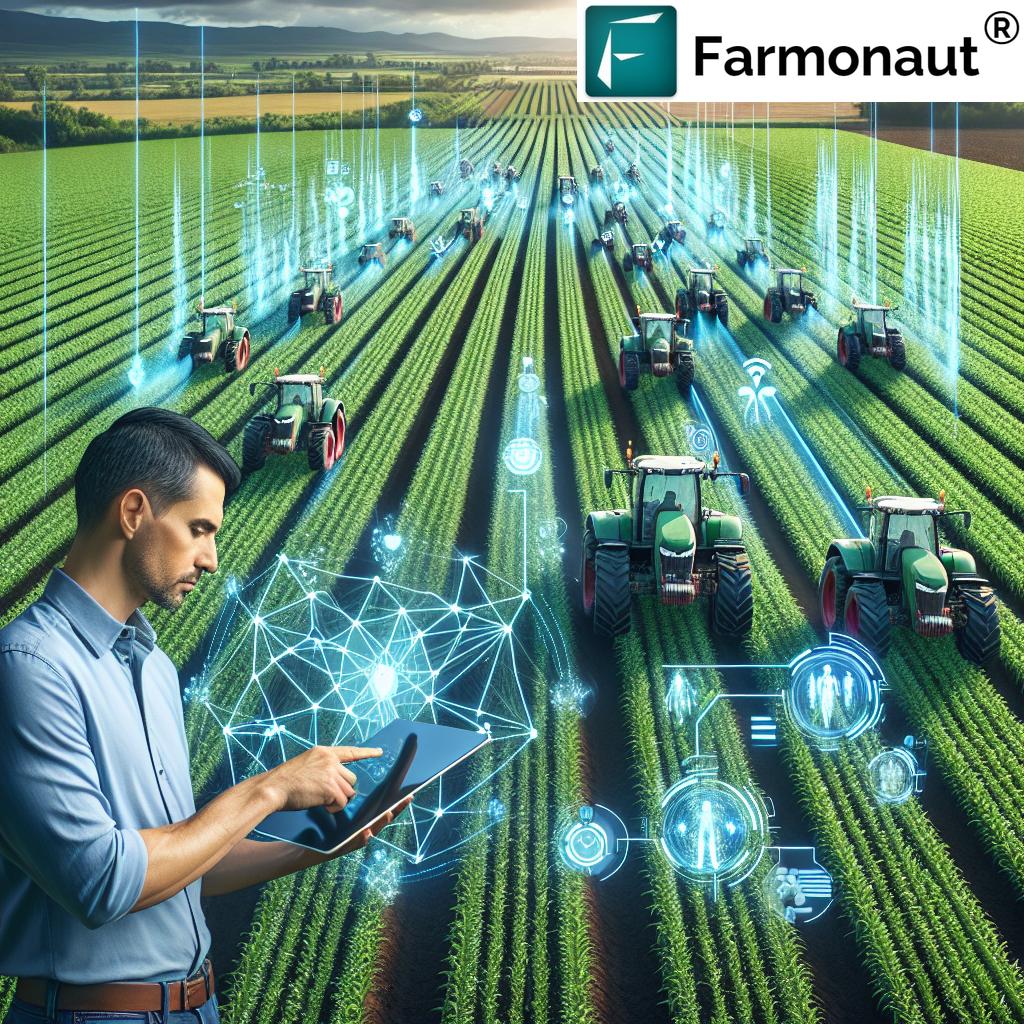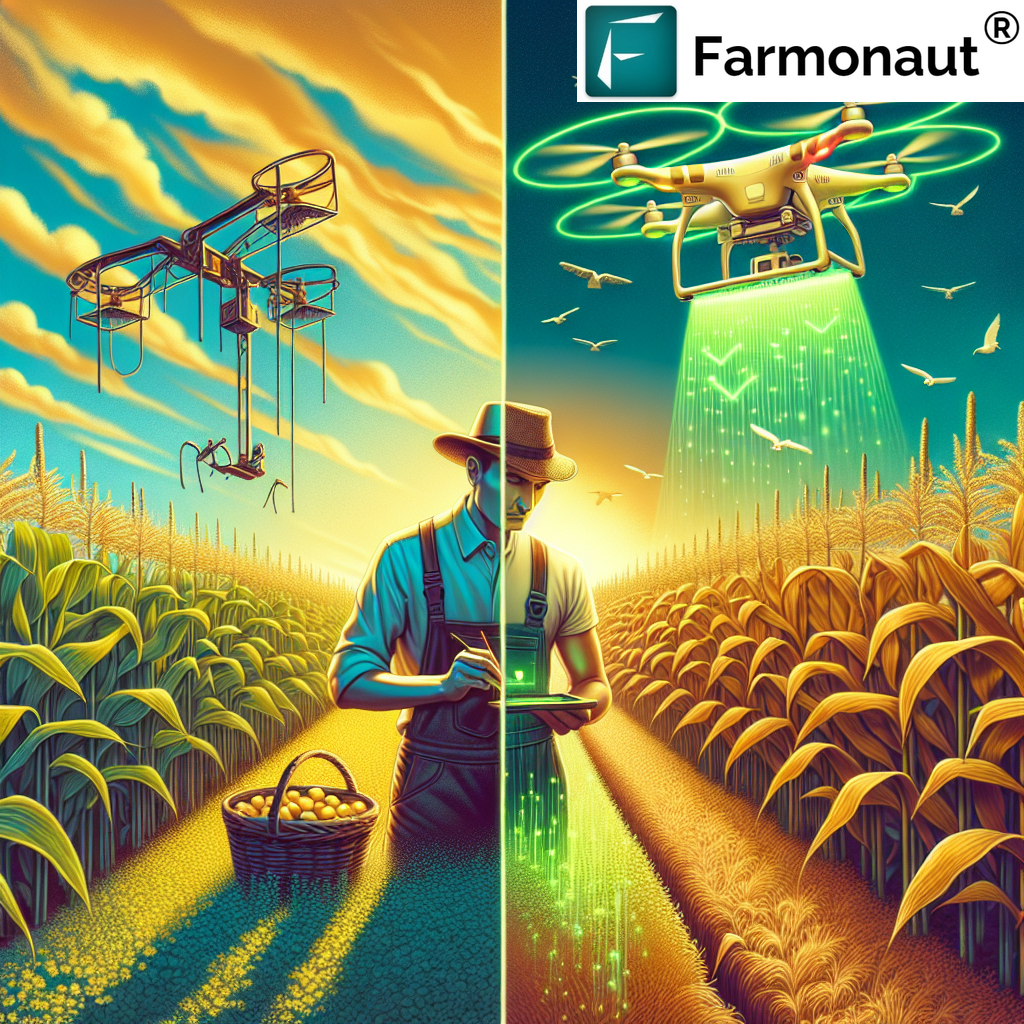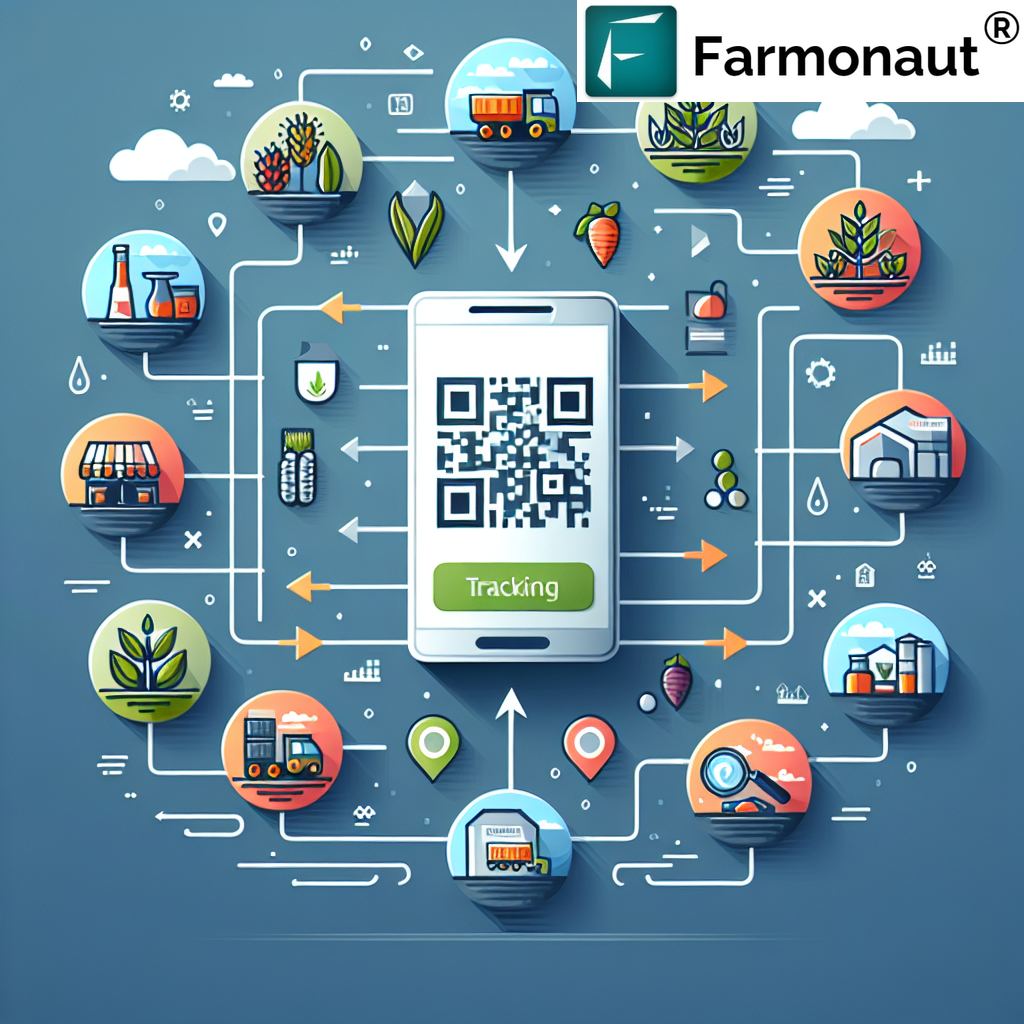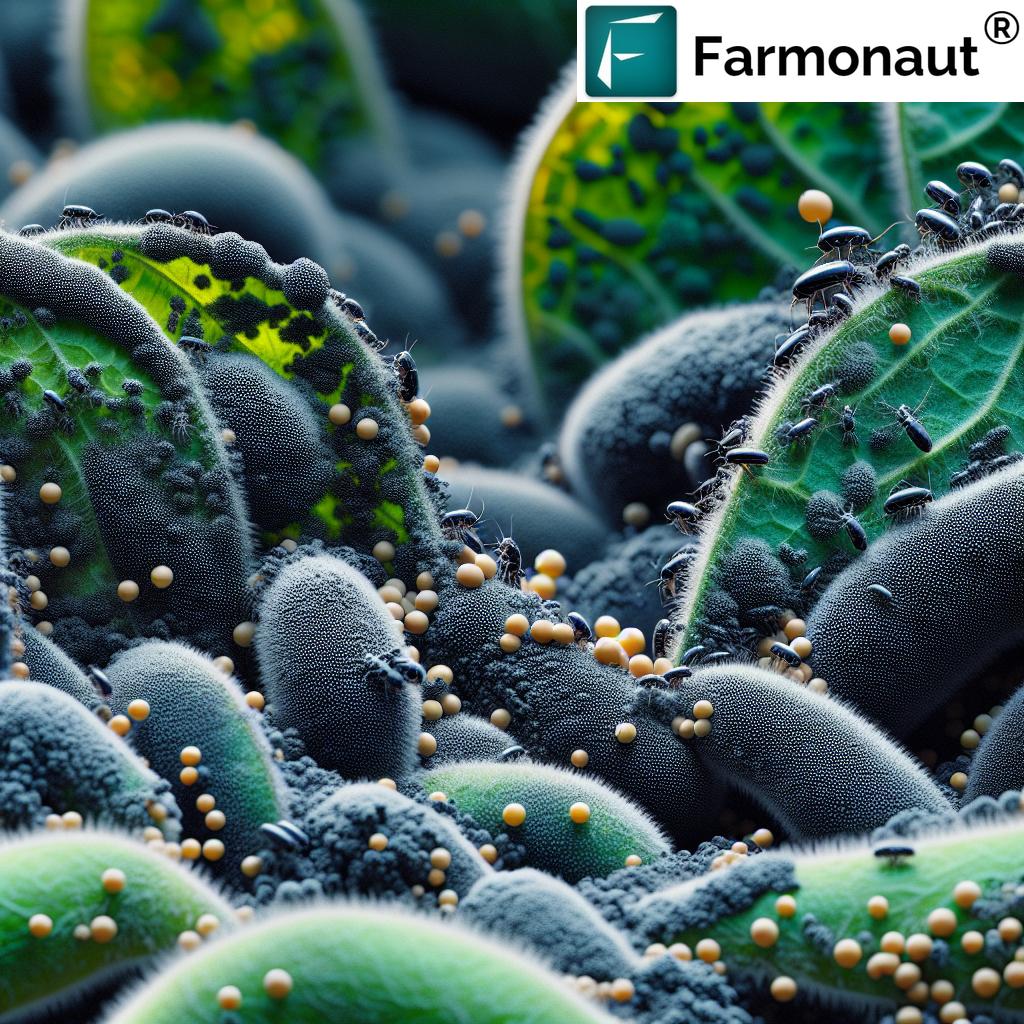Smart Farms: 7 Tech Secrets Transforming Agriculture
Table of Contents
- Smart Farming: Revolutionizing Agriculture for a Sustainable Future
- Defining Smart Farming & Precision Agriculture
- Trivia: Smart Farms Impact
- Impact of Smart Farming Technologies on Agriculture
- 7 Tech Secrets Powering Smart Farms
- 1. IoT in Agriculture: Smarter Sensing, Smarter Decisions
- 2. Artificial Intelligence & Machine Learning: AI-Driven Agriculture
- 3. Automation & Robotics: Farm Automation Systems
- 4. Drones & Remote Sensing: Crop Monitoring Solutions
- 5. Data Analytics & Cloud Computing: Data-Driven Farm Management
- 6. Blockchain & Traceability: Transparent Supply Chains
- 7. Satellite-Based Farm Management: The Farmonaut Advantage
- Trivia: Precision Agriculture Sustainability
- Challenges of Smart Farming Adoption
- The Future of Smart Farms: Scalability & Sustainability
- Farmonaut: Making Precision Agriculture Affordable, Scalable & Sustainable
- FAQ: Smart Farming, Precision Agriculture & Farmonaut
Smart Farming: Revolutionizing Agriculture for a Sustainable Future
In today’s rapidly changing world, smart farming and precision agriculture have emerged as the driving forces behind the agricultural sector’s digital transformation. By blending advanced technologies such as AI, IoT, machine learning, and data analytics, we—farmers, agronomists, and agricultural innovators—are forging a new era of farming that is more productive, resource-efficient, and sustainable. This revolution is not about replacing centuries-old wisdom, but about amplifying it with intelligent tools and actionable data, ensuring food security, profitability, and environmental stewardship for generations to come.
At the heart of smart farming lies an unwavering commitment to sustainability—a mission to feed our growing population while minimizing environmental impact. Let’s journey together into the core of this transformation, uncovering the seven tech secrets that are making our farms smarter, our yields higher, and our future more secure.
Defining Smart Farming & Precision Agriculture
Smart farming—sometimes called digital farming or precision agriculture—is the integration of digital technologies, advanced analytics, and automated systems into every layer of the agricultural process. Instead of relying purely on tradition, we now utilize streams of data collected from field sensors, satellites, and IoT devices to monitor crops, analyze conditions, and make real-time decisions. This approach enables us to optimize resource utilization—seeds, water, fertilizers, pesticides—by applying them exactly where and when they are needed, not a drop or gram more, thus reducing environmental impact and boosting crop yields.
At its core, precision agriculture is about leveraging emerging tools to respond precisely and swiftly to changing environmental conditions, from variations in soil moisture to sudden weather events or disease outbreaks. The goal: increased productivity, profitability, and sustainability for every farm, no matter its scale.
Impact of Smart Farming Technologies on Agriculture
| Smart Farming Technology | Yield Increase (%) | Resource Savings (%) | Sustainability Impact | Example Application |
|---|---|---|---|---|
| AI-Driven Crop Monitoring | 20–30% | Up to 20% water | Reduced CO2 by decreasing input waste | Predicting disease outbreaks, optimizing harvest times |
| IoT Sensors | 10–20% | 10–25% water/fertilizer | Prevents overwatering & leaching, lowers emissions | Soil moisture/temperature triggers precision irrigation |
| Drones & Aerial Imaging | up to 15% | Detect input hotspots | Early identification of stress reduces chemical/pesticide use | Scouting crop health, mapping field variability |
| Automated Irrigation Systems | 5–12% | Up to 30% water | Reduces run-off & evaporation—a major sustainability win | Soil moisture-based, weather-adjusted irrigation |
| Farm Management Software | 4–10% | 10–18% chemicals saved | Lower input use, optimized crop rotation | Planning, record-keeping, compliance tracking |
| Precision Seeding | up to 13% | 16% seed saving | Ensures denser stands with fewer seeds | Variable rate seeding based on soil/zones |
| Predictive Analytics | 8–14% | 9–12% saved resources | Reduces surplus, improves market readiness | Yield forecast, risk alerts, market trend analysis |
7 Tech Secrets Powering Smart Farms
Let’s dive into the essential agricultural technologies that are fueling the smart farm revolution and how they are accelerating sustainable farming practices across the globe.
1. IoT in Agriculture: Smarter Sensing, Smarter Decisions
The Internet of Things (IoT) is weaving a web of intelligence across our fields. By deploying thousands of connected sensors—from soil moisture probes to weather stations and GPS trackers—we collect granular data 24/7 about field conditions, equipment performance, and crop health. This stream of continuous feedback forms the backbone of precision agriculture.
- Soil Sensors: Measure real-time moisture, pH, temperature, and nutrient status, triggering automated irrigation systems or fertilizer application only when needed.
- Weather Stations: Offer hyper-local forecasts, alerting us to upcoming rain, frost, or disease risk—so we adjust practices promptly for maximum productivity.
- Livestock Trackers: Monitor animal location and health, improving management and welfare.
By integrating IoT with cloud platforms, we enable farmers to remotely monitor every block of their farm via smart devices and make instant, data-driven decisions. The result? Reduced resource waste, increased yields, and easier compliance with sustainability standards.
2. Artificial Intelligence & Machine Learning: AI-Driven Agriculture
AI is redefining farm management from the soil up. Artificial intelligence in agriculture allows us to analyze enormous datasets—from satellite imagery to sensor readings and weather patterns—delivering insights that drive crop productivity and resource efficiency.
- Predicting Yields and Growth Patterns: AI models forecast plant growth, detect variability in fields, and pinpoint upcoming yield potential based on real-time conditions.
- Disease and Pest Detection: Machine learning algorithms scan images and data to identify early disease or infestation, recommending optimal intervention times—leading to fewer crop losses.
- Strategic Decision-Making: With AI-backed advice, we time planting, irrigation, and harvesting for maximum output, while also improving long-term sustainability by forecasting trends and risks.
By incorporating AI-powered advisories, we are better equipped to manage operations, reduce waste, and boost profitability on every hectare.
3. Automation & Robotics: Farm Automation Systems
With automation and robotics, we are reimagining labor, efficiency, and quality in modern agriculture. Farm automation systems include everything from self-driving tractors to robotic planters, weeding bots, and aerial vehicles. These advanced machines perform repetitive, manual tasks with precision—reducing human error and freeing up our time for higher-level decision-making.
- Autonomous Tractors & Harvesters: GPS-guided and sensor-steered, performing accurate planting, weeding, and harvesting operations—day or night.
- Robotic Sprayers & Weeders: Target weeds while reducing pesticide use, promoting resource efficiency and environmental safety.
- Automated Drones: Enable rapid, large-scale crop monitoring, aerial spraying, and even livestock herding.
This automated future is not distant—it’s already boosting yields, reducing labor costs, and minimizing resource wastage in farms worldwide.
4. Drones & Remote Sensing: Crop Monitoring Solutions
Our ability to view crops from above has silently revolutionized agricultural science. Drones, or UAVs (unmanned aerial vehicles), equipped with high-resolution and multispectral sensors, become our eyes in the sky. They regularly fly over fields, capturing timely images of plant health, soil variability, and environmental conditions.
- Multispectral Imaging: Pinpoints stressed or diseased crops, identifies areas with nutrient deficiencies, and spots moisture issues in real time.
- Remote Sensing: Allows us to build seasonal NDVI maps (Normalized Difference Vegetation Index), tracking the growth and vigor of every crop row for timely interventions.
- Efficient Resource Application: Instead of blanket treatments, we use drone data to target only the areas that need inputs, leading to better sustainability.
Solutions like satellite-powered crop monitoring extend this capability even further, offering a broad, scalable, and cost-effective platform for data-driven decision making.
5. Data Analytics & Cloud Computing: Data-Driven Farm Management
We are now harvesting a far more valuable crop alongside wheat and soy: data. By aggregating, storing, and analyzing it through cloud-based farm management software, we uncover hidden trends and translate them into actionable strategies.
- Big Data Analytics: Processes thousands of variables, from weather and soil to equipment performance, optimizing scheduling, risk management, and yield projection.
- Cloud Collaboration: Securely shares information among farmers, advisors, and other stakeholders, streamlining operations across regions or time zones.
- Customization: Sophisticated farm automation systems make it easy to set notifications, track compliance, or record historical outcomes—for individual fields or entire agribusinesses.
Platforms such as Farmonaut’s advanced satellite-connected app (available on Android & iOS) offer scalable data-driven farm management and a user-friendly experience for farms of all shapes and sizes.
Developers and researchers can also access Farmonaut’s API and Developer Docs to integrate real-time satellite and weather data directly into their own agricultural systems or research.
6. Blockchain & Traceability: Transparent Supply Chains
The path from farm to table is complex and often opaque. Leveraging blockchain technology, we are now able to build transparent, tamper-resistant records for every step of the agricultural supply chain.
- Product Traceability: Consumers, food processors, and financial institutions can verify the origin, authenticity, and journey of every crop—down to individual batches.
- Supply Chain Trust: Blockchain registers each transaction and process, protecting data from fraud and boosting accountability in food safety and quality.
- Integrated Platforms: Farmonaut’s traceability solution ensures complete transparency, especially valuable for textiles and regulated agricultural exports.
By embedding blockchain into standard operational and reporting systems, we enable global compliance, open up access to premium markets, and reduce losses from counterfeiting or mislabeling.
7. Satellite-Based Farm Management: The Farmonaut Advantage
The most powerful paradigm shift in data-driven decision making is the arrival of satellite-based crop monitoring. Unlike legacy hardware systems, satellites can scan thousands of hectares at once, updating us with near real-time insights right on our smartphones or desktop.
- Multispectral Satellite Imagery: Measures NDVI, soil health, moisture, and crop vigor—empowering farmers with knowledge to optimize irrigation, fertilizer use, and pest control.
- Carbon Footprint Tracking: Monitor and report your farm’s emissions with tools like Farmonaut’s carbon footprinting platform, helping farms comply with environmental regulations and improve their sustainability score.
- Fleet & Resource Management: Whether for smallholder or enterprise farms, integrated remote vehicle and equipment tracking (see Fleet Management) offers operational visibility and cost reduction.
With satellite-powered farm automation systems, we move closer to a world where precision agriculture is affordable, accessible, and scalable for every farmer, everywhere.
-
Large-Scale Farm Management: Farmonaut’s Agro Admin app offers advanced tools for managing multi-hectare plantations, with features for team collaboration, compliance, and productivity analysis. -
Crop Loans & Insurance: Satellite-based verification helps financial institutions and farmers alike by delivering proof of planting, acreage, and yield estimation to streamline loan and insurance disbursals. -
Carbon Footprinting: Track, monitor, and report GHG emissions for regulatory reporting or environmental marketing. -
Blockchain Traceability for Food & Textiles: Secure supply chain, meet new traceability mandates, and assure consumers with transparent sourcing. -
Fleet Management: Optimize logistics, reduce downtime, and monitor vehicle safety for your farming operations at any scale.
Challenges of Smart Farming Adoption
While the rewards of smart farming are immense, practical challenges remain—especially for smallholder and resource-constrained producers.
- High Initial Costs: Advanced IoT devices, data subscriptions, and custom software require upfront investment. (Farmonaut counters this through affordable satellite-based tools.)
- Technical Skills Gap: Operating digital platforms and interpreting analytics requires new skills, creating a need for ongoing training and support. (Farmonaut’s intuitive apps are designed for all tech levels.)
- Data Management & Privacy: Farms generate terabytes of data—safe storage, access control, and privacy must be rigorously maintained.
- Connectivity Issues: Many rural regions lack reliable internet, impacting the operation of cloud-based IoT in agriculture and real-time crop monitoring solutions.
- Integration Complexity: Adapting traditional farm operations to work alongside modern technology often involves a cultural and operational shift.
Forward-thinking agtech providers are closing these gaps by offering modular, scalable, and cost-effective solutions that meet farms where they are—both technologically and financially.
The Future of Smart Farms: Scalability & Sustainability
We are entering a golden age of agricultural technology, with smart farms rapidly becoming the new standard. As sensors, satellite data, and cloud analytics become more affordable and universally accessible, precision agriculture will empower farmers everywhere—from India’s small rice plots to vast U.S. wheat corridors—to increase crop yields with technology and achieve unmatched sustainability.
Our focus in the coming years must be:
- Making Technology Accessible: Ensuring smart solutions reach both large agribusinesses and smallholder farms globally.
- Data Literacy for Farmers: Equipping farmers with digital skills to leverage the power of analytics and real-time crop monitoring.
- Linking Agriculture & Environmental Goals: Utilizing data and automation to meet carbon, soil health, and biodiversity targets—while maintaining profitability.
- Transparency & Trust: Using blockchain-powered traceability to build faith with consumers, banks, and regulators.
With the right policies, training, and technology support, smart farming will be the norm for a sustainable and food-secure future.
Farmonaut: Making Precision Agriculture Affordable, Scalable & Sustainable
Farmonaut stands as a global pioneer in satellite-powered smart farming solutions, transforming how farmers monitor, manage, and optimize their lands:
- Crop Health Monitoring & Yield Optimization: Real-time satellite imagery and NDVI analytics empower producers to spot trends and problems early—directly boosting yields and cutting waste.
- AI Farm Advisory (Jeevn AI): Personalized strategies based on the latest weather, soil, and crop data; actionable alerts in your app.
- Product Traceability: Blockchain-powered records for authentic, tamper-proof supply chains —learn more here.
- Fleet and Resource Management: Remotely track and optimize all your field machinery and vehicles with Farmonaut’s solution.
- Carbon Footprinting: Continually monitor environmental impact and make your farm’s operations more sustainable.
- Flexible Accessibility: Use Farmonaut on Android, iOS, Web, or via powerful API data for integration with proprietary systems and research labs.
What sets Farmonaut apart?
- Affordability: No need for expensive new hardware—satellite monitoring covers every hectare.
- Data-Driven Results: Turn complex analytics into easy-to-understand alerts and advice for maximum resource efficiency.
- Multi-Scale Fit: Designed for everyone: smallholder growers, large plantations, co-ops, financial institutions, and research agencies.
- Sustainability Focus: All solutions emphasize sustainable farming practices and environmental stewardship.
- Global Reach, Local Impact: Available wherever there’s internet or mobile data.
Whether you’re a single farmer or managing thousands of hectares, Farmonaut is your trusted partner in smarter, sustainable, and more profitable agriculture.
FAQ: Smart Farming, Precision Agriculture & Farmonaut
What is smart farming?
Smart farming is the use of digital technologies (IoT sensors, AI, satellite data, automation, analytics) to monitor and optimize agricultural practices. It enables precision in irrigation, fertilization, pest management, and harvesting—minimizing waste and maximizing yields and sustainability.
What are the top 3 technologies driving smart farms?
- IoT Sensors: For real-time field and livestock monitoring.
- AI and Machine Learning: For predictive analytics and optimized recommendations.
- Satellite-Based Crop Monitoring: For multi-hectare field insights delivered right to your phone or API.
How does precision agriculture help the environment?
Precision agriculture reduces input waste (like fertilizers and water), curbs chemical runoff, and slashes energy use. This reduces the overall environmental impact of farming and helps promote soil health and biodiversity.
Can smart farming help smallholder farmers, or is it only for large agribusiness?
Absolutely. With platforms like Farmonaut, even small and medium-sized farms can access powerful satellite and AI tools without the need for expensive hardware. This democratizes access, improves local profitability, and supports rural communities.
What is product traceability and why does it matter?
Product traceability uses blockchain or secure databases to track goods from farm to consumer. It assures food safety, fights counterfeiting, and improves brand promise for both local markets and global exports.
How do I get started with Farmonaut?
Simply download the app (Android, iOS, or web), choose a plan that fits your scale, and follow the easy onboarding to start monitoring your fields instantly. Advanced users and businesses can explore API access for custom analytics and integration.
Ready to join the smart farming revolution? Get started with Farmonaut today!


